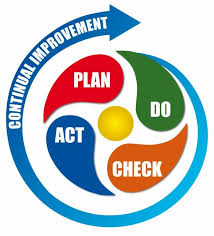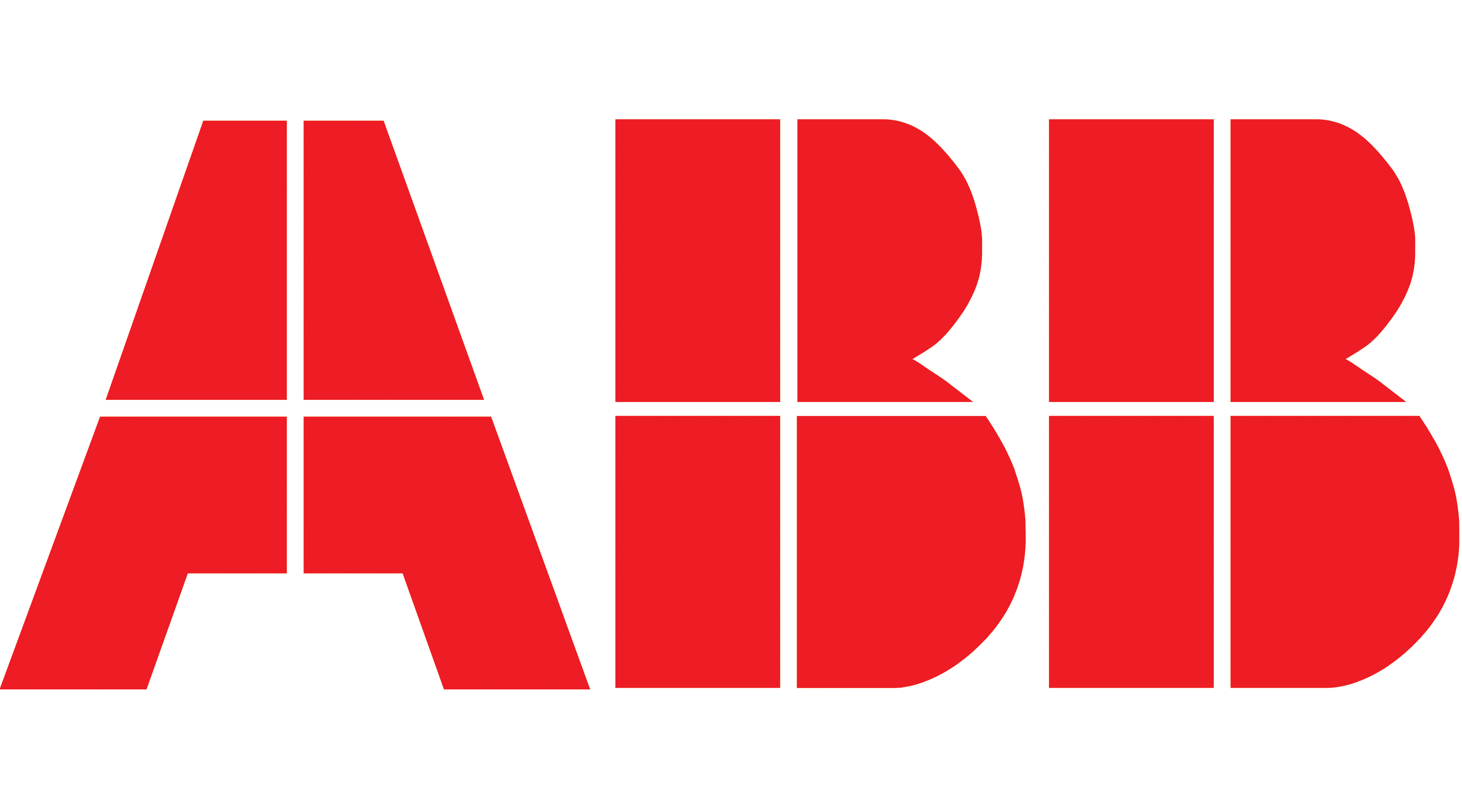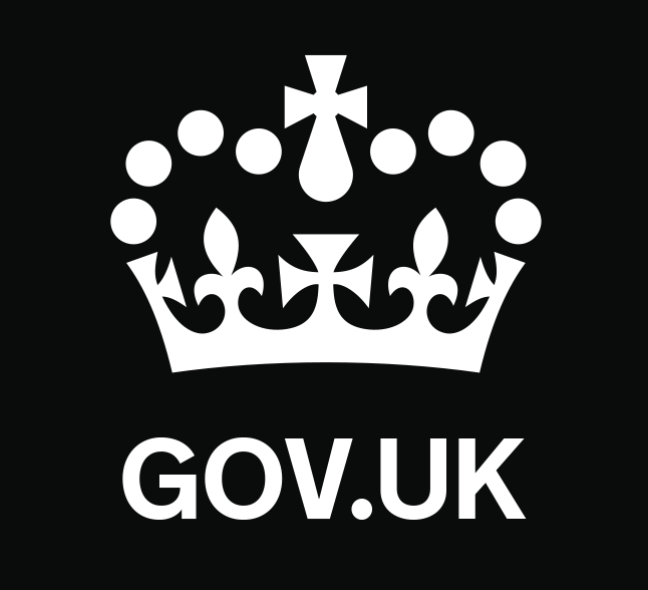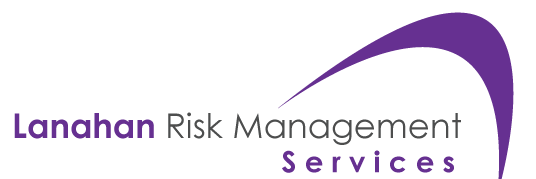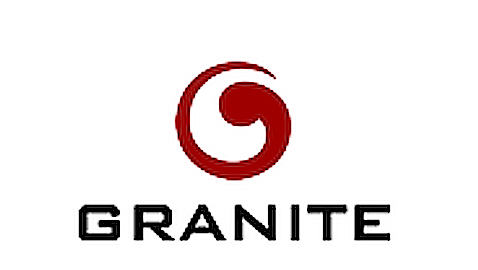Title Page
-
Site conducted
-
Site Name
-
Date
-
Simpro Job Number
-
Location
-
Fantail Employee Name
-
Fantail Employee Contact Number
-
Fantail Employee Signature
-
Site Contact Person:
-
Site Contact Number:
-
Fantail H & S Representative: Erik Potgieter
-
Fantail H & S Contact Number: 021 249 3563
-
Document Number
SSSP
Site Information
Notifiable Works
-
Does Worksafe need to be notified of any onsite activities (If yes we agree to provide a copy of the notification)
Task Analysis
-
We will prepare a written task analysis covering all hazards and appropriate controls associated with our works, and provide a copy before any work commences on site
Hazard and Risk Management
-
We will maintain a hazard register for all existing and new hazards including appropriate controls
Hazardous Products and Substances
-
Will any Hazardous products or substances be brought onto the site to preform work? (If yes, we agree to record these products in a hazardous products and substances register and to have the relevant safety data sheets available on site)
Communication
-
Methods of communication
-
Toolbox Talks
-
Frequency
-
Pre-Starts
-
Frequency
-
Health and Safety Site Visits
-
Frequency
Accident reporting, investigation & records
-
We have an accident/incident reporting/investigation system in place and keep a register
-
We will immediately notify all accidents, injuries and serious near misses to site management
-
We will immediately notify WorkSafe NZ if a Notifiable Event occurs while we are completing our work
Training and Competency
-
All persons under our control will hold a current site safety passport or equivalent
-
All persons under our control will be appropriately qualified, trained, competent or supervised. (We agree to provide a competency register)
Environmental
-
Will dust, fumes or smoke be generated that could affect other workers or members of the public? If yes, how will this be controlled?
-
Will noise be generated that could affect other workers or members of the public? If yes, how will this be controlled?
Emergencies
-
We will always have a first aid kit available
Sub-Contractors
-
We will be using our own sub-contractors (If yes, we agree to provide their SSSP)
-
Fantail (PCBU2) - We agree to act according to the content of this site specific safety plan as outlined above
-
Signature:
-
Date:
-
Main Contractor (PCBU1) - We confirm that the information provided above is appropriate and agreement is given for works to commence
-
Signature:
-
Date:
Site/Job Hazard and Risk Register
-
This Site/Job Hazard Register is used by the contractor (PCBU 2) and relates to site or job-specific hazards only. It does not replace a company’s overarching Health and Safety Hazard Register. This document relates to any activities, procedures, processes or equipment that a contractor brings to the site, or is working on. To successfully complete this register, you must also use the Risk Assessment Matrix and Hierarchy of Controls
Risk Matrix
-
Use the Risk Matrix to determine the initial risk level and the residual risk level.
Identified Hazard or Harm
-
General lifting of equipment – Slips trips and falls. Cuts
and strains. Damage to property -
Initial Risk Assessment: Moderate
-
Keep good posture. Look straight ahead, and
keep your back straight, your chest out, and
your shoulders back. This helps keep your
upper back straight while having a slight arch in
your lower back. Slowly lift by straightening
your hips and knees (not your back). Keep your
back straight, and do not twist as you lift.
Hold the load as close to your body as possible,
at the level of your belly button.
Use your feet to change direction, taking small
steps.
Lead with your hips as you change direction.
Keep your shoulders in line with your hips as
you move
Set down your load carefully, squatting with the
knees and hips only.
Keep in mind:
Do not attempt to lift by bending forward. Bend
your hips and knees to squat down to your load,
keep it close to your body, and straighten your
legs to lift.
Never lift a heavy object above shoulder level.
Avoid turning or twisting your body while lifting
or holding a heavy object -
Level of control: 3
-
Residual Risk Assessment: Low
- Catastrophic (e.g. Fatal)
- Major (e.g. Permanent Disability)
- Moderate (e.g. Hospitalisation/ Short or Long Term Disability)
- Minor (e.g. First Aid)
- Superficial (e.g. No Treatment Required)
-
For Discussion at a Toolbox Talk / Safety Meeting
Identified Hazard or Harm
-
Set up mobile, zip, scaffold and step ladders –
Damage to Property -
Initial Risk Assessment: Moderate
-
Check and confirm the access equipment
provided is suitable for use.
Set zip scaffolding in an open space to
eliminate any damage to furnishings. Ensure
the kick board is fitted. -
Level of control: 3
-
Residual Risk Assessment: Low
-
For Discussion at a Toolbox Talk / Safety Meeting
Identified Hazard or Harm
-
Falling Objects
-
Initial Risk Assessment: Moderate
-
Wear correct PPE, ie Hard hat and safety
glasses. Ensure toe kickboards are installed on
scaffolding. Additional controls could include
only working if weather permits, ensure
materials are secured and safety netting &
screens are in place -
Level of control: 3
-
Residual Risk Assessment: Low
-
For Discussion at a Toolbox Talk / Safety Meeting
Identified Hazard or Harm
-
Poor Lighting
-
Initial Risk Assessment: Moderate
-
Arrange for Temporary lighting/portable lighting
to be installed/used in work areas -
Level of control: 3
-
Residual Risk Assessment: Very Low
-
For Discussion at a Toolbox Talk / Safety Meeting
Identified Hazard or Harm
-
Slippery Surfaces
-
Initial Risk Assessment: Moderate
-
Ensure correct footwear is used and has
appropriate tread levels. Notify site manager of
any areas that may need to be notified on site
hazard board -
Level of control: 3
-
Residual Risk Assessment: Low
-
For Discussion at a Toolbox Talk / Safety Meeting
Identified Hazard or Harm
-
Multiple Electrical Feeds & Electrical Hazards LV/HV –
Electrocution & Burns -
Initial Risk Assessment: Critical
-
Ensure to use correct PPE and efficient
methods to carry out prove, test, prove when
dealing with live electrical cables/terminations
Under no circumstance will any unauthorised
employee or subcontractor engage in any Live
Work. -
Level of control: 2
-
Residual Risk Assessment: Low
-
For Discussion at a Toolbox Talk / Safety Meeting
Identified Hazard or Harm
-
General Electrical
-
Initial Risk Assessment: Critical
-
Ensure all leads are in good condition ie no
exposed wires, good insulation.
No Overloading
Use of Protective devices (RCD/Transformer)
Testing & Tagging
Locate Overhead/Underground Services
Lockout/Tag out implemented -
Level of control: 2
-
Residual Risk Assessment: Low
-
For Discussion at a Toolbox Talk / Safety Meeting
Identified Hazard or Harm
-
Trip Hazards
-
Initial Risk Assessment: Moderate
-
Notify site manager of any areas that may need
to be notified on site hazard board. Ensure to
keep work areas clean and tidy -
Level of control: 3
-
Residual Risk Assessment: Low
-
For Discussion at a Toolbox Talk / Safety Meeting
Identified Hazard or Harm
-
Sharp Materials
-
Initial Risk Assessment: Moderate
-
Ensure to use correct PPE when handling
ductwork or other sharp materials, ie safety
gloves and glasses -
Level of control: 4
-
Residual Risk Assessment: Low
-
For Discussion at a Toolbox Talk / Safety Meeting
Identified Hazard or Harm
-
Working at Heights
-
Initial Risk Assessment: Critical
-
If possible, remove work to area free from falls.
Means provided to prevent fall.
Before using ladders, check all fixings, stays
and rubber feet for appropriate condition.
Ensure to use ladder correctly, ie 3 points of
contact and not standing on the top two steps.
When working at Heights where fall arrest
harness is required, ensure all users have
appropriate training/certificates in the use of the
Harness. Ensure emergency rescue procedures
established and practiced.
Area below height work area to be cordoned off
Ensure to complete job specific Task Analysis.
All stairwells planked out
Hand rails erected if more than 1 metre fall. -
Level of control: 2
-
Residual Risk Assessment: Low
-
For Discussion at a Toolbox Talk / Safety Meeting
Identified Hazard or Harm
-
Inhalant Dust/Fibers
-
Initial Risk Assessment: Moderate
-
Ensure to use appropriate PPE, ie Dust mask/
Respirator -
Level of control: 4
-
Residual Risk Assessment: Low
-
For Discussion at a Toolbox Talk / Safety Meeting
Identified Hazard or Harm
-
High Noise Levels
-
Initial Risk Assessment: Moderate
-
Ensure to use appropriate PPE, ie appropriately
rated Ear muffs/Ear plugs -
Level of control: 4
-
Residual Risk Assessment: Low
-
For Discussion at a Toolbox Talk / Safety Meeting
Identified Hazard or Harm
-
Elevated Work Platform
-
Initial Risk Assessment: High
-
Ensure to use correct PPE, ensure all
components of elevated work platform are in
good condition. Ensure logbook is filled out
correctly. Ensure operating personnel has been
appropriately trained for the specific Elevated
Work Platform being used -
Level of control: 3
-
Residual Risk Assessment: Low
-
For Discussion at a Toolbox Talk / Safety Meeting
Identified Hazard or Harm
-
Moving Machinery
-
Initial Risk Assessment: Critical
-
Ensure to use correct PPE, ensure to have
visual and/or verbal contact with machinery
operators at all times -
Level of control: 3
-
Residual Risk Assessment: Low
-
For Discussion at a Toolbox Talk / Safety Meeting
Identified Hazard or Harm
-
Tools & Equipment
-
Initial Risk Assessment: Moderate
-
Ensure to use correct PPE for the use of
specific tools & equipment, ie Hearing
protection, safety glasses and safety gloves -
Level of control: 4
-
Residual Risk Assessment: Low
-
For Discussion at a Toolbox Talk / Safety Meeting
Identified Hazard or Harm
-
Environmental Hazards – Including Sun Burn, Wind
Burn, Dehydration, Hyperthermia -
Initial Risk Assessment: Moderate
-
Only work if weather permits
Wear appropriate clothing
Wear appropriate footwear
Cover up – hat, sunglasses, long sleeve top,
long pants
Minimise outside work during 11-4pm over
summer months
Apply Sun Block Self-monitor body effects (stop when you must) -
Level of control: 3
-
Residual Risk Assessment: Low
-
For Discussion at a Toolbox Talk / Safety Meeting
Identified Hazard or Harm
-
Fire & Explosion – All Hot Works, Welding, Gas
Cutting, lancing & Explosive demolition -
Initial Risk Assessment: Critical
-
Correct extinguisher available.
Escape routes clear.
Emergency procedures and plans.
No smoking.
Limit waste materials.
Manage Hot Works procedures.
Hot Work Permits.
Correct storage of flammable substances. -
Level of control: 3
-
Residual Risk Assessment: Low
-
For Discussion at a Toolbox Talk / Safety Meeting
Identified Hazard or Harm
-
Hazardous Substances
-
Initial Risk Assessment: Moderate
-
Use safer alternative.
SDS available.
Properly stored.
Safely handled. -
Level of control: 3
-
Residual Risk Assessment: Low
-
For Discussion at a Toolbox Talk / Safety Meeting
Identified Hazard or Harm
-
Housekeeping
-
Initial Risk Assessment: Moderate
-
Rubbish removed regularly.
Delivery of products/materials on-site.
Safe work areas.
Designated storage areas.
Safe access and egress to site for all
employees.
Rigid policy on de-nailing timber.
Minimise dust. Vacuum clean. -
Level of control: 3
-
Residual Risk Assessment: Low
-
For Discussion at a Toolbox Talk / Safety Meeting
Identified Hazard or Harm
-
Ventilation
-
Initial Risk Assessment: High
-
Sufficient fresh air.
Adequate means of extraction of contaminated
air/steam/dust.
Do not enter site when spray painting or
sanding in progress -
Level of control: 3
-
Residual Risk Assessment: Low
-
For Discussion at a Toolbox Talk / Safety Meeting
Identified Hazard or Harm
-
Public Protection
-
Initial Risk Assessment: Moderate
-
Sufficient hoarding.
Fencing and barricades.
Safe pedestrian access past site traffic
management for loading and delivery.
Construction separated from occupied areas
of projects.
Safety/site signage. -
Level of control: 3
-
Residual Risk Assessment: Minor
-
For Discussion at a Toolbox Talk / Safety Meeting
Identified Hazard or Harm
-
Portable Power Tools - Electrical
-
Initial Risk Assessment: High
-
All electrics to be checked three (3) monthly
and tagged in accordance with AS/NZS
3760:1996. (Published by NZ Standards Assn).
Eye and hearing protection worn.
All guards fitted and in working order.
Maintain safe work practices.
Safety footwear worn.
Use of protective devices (RCD/transformer).
Flying debris controlled.
Used properly to manufacturer’s
specifications. -
Level of control: 3
-
Residual Risk Assessment: Low
-
For Discussion at a Toolbox Talk / Safety Meeting
Identified Hazard or Harm
-
Vehicle Use
-
Initial Risk Assessment: Critical
-
Licensed operators only.
Avoid fatigue.
No distractions in vehicle.
Secured loads.
Use of seatbelts.
Check vehicle before use each day.
Ensure regular maintenance. -
Level of control: 3
-
Residual Risk Assessment: Low
-
For Discussion at a Toolbox Talk / Safety Meeting
Identified Hazard or Harm
-
Scaffolding
-
Initial Risk Assessment: Critical
-
All scaffolding to be erected in accordance
with Approved Code of Practice for the Safe
Erection and Use of Scaffolding.
Notify DoL if 5.0 metres or more 24 hours
before erecting.
All scaffolds correctly braced and stabilised.
3:1 height to base ratio.
Firm foundation, plumb and level.
Ladder access provided and used.
Proper platform (3 planks/675mm).
Planks secured.
Guardrails and toe boards – 900mm to
1100mm high.
Work platform within 200mm of working face.
Erected by competent scaffolder.
Any part of scaffolding 5.0 metres high or
more above ground level must be erected by a
person who holds a Certificate of Competency
in scaffolding work. -
Level of control: 2
-
Residual Risk Assessment: Low
-
For Discussion at a Toolbox Talk / Safety Meeting
Identified Hazard or Harm
-
Confined Space
-
Initial Risk Assessment: High
-
Remove work from confined space.
All confined spaces known and marked.
Only authorised personnel in confined space.
Training.
Permit to Work System.
Atmosphere tested/known.
Ventilation. -
Level of control: 3
-
Residual Risk Assessment: Low
-
For Discussion at a Toolbox Talk / Safety Meeting
Site Set-Up
-
Sequence of Basic Steps: Describe each step in the activity – most will have 4-8 steps. Follow the flow of the product or process.
Step 1
-
Attend Site and prepare work space
Potential hazards and risks Describe the key hazards and risks for each step – there will normally be more than one per step. Number each hazard e.g 1a, 1b, 1c; 2a, 2b, 2c.
-
1a - Already Commenced works on site
-
Initial Risk Assessment: Moderate
-
Control methods and level of control Describe the key/significant way to control the risk and then refer to the hierarchy of controls
-
Attend site with all correct PPE as indicated on the Safe work method statement
-
Level: 4
-
Before any setup is carried out, ensure to be inducted onto the site by the main contractor. Establish area for site set up while ensuring all unique Health & safety aspects of the site are understood
-
Level: 3
-
Residual Risk Assessment: Low
-
1b: Vehicles moving to and from and/or around the site.
-
Initial Risk Assessment: Critical
-
Control methods and level of control Describe the key/significant way to control the risk and then refer to the hierarchy of controls
-
Attend site with all correct PPE as indicated on the Safe work method statement
-
Level: 4
-
Ensure Visual contact is made with vehicle operators, while maintaining a safe distance
-
Level: 3
-
Residual Risk Assessment: Low
-
1c - Unknown Aspect of the Site
-
Initial Risk Assessment: Moderate
-
Control methods and level of control Describe the key/significant way to control the risk and then refer to the hierarchy of controls
-
Attend site with all correct PPE as indicated on the Safe work method statement
-
Level: 4
-
Before any setup is carried out, ensure to be inducted onto the site by the main contractor. Establish area for site set up while ensuring all unique Health & safety aspects of the site are understood
-
Level: 3
-
Residual Risk Assessment: Low
Step 2
-
General Lifting of Equipment
Potential hazards and risks Describe the key hazards and risks for each step – there will normally be more than one per step. Number each hazard e.g 1a, 1b, 1c; 2a, 2b, 2c.
-
2a - Slips, trips and falls
-
Initial Risk Assessment: Moderate
-
Control methods and level of control Describe the key/significant way to control the risk and then refer to the hierarchy of controls
-
Keep good posture. Look straight ahead, and keep your back straight, your chest out, and your shoulders back. This helps keep your upper back straight while having a slight arch in your lower back.
Slowly lift by straightening your hips and knees (not your back). Keep your back straight, and do not twist as you lift.
Hold the load as close to your body as possible, at the level of your belly button.
Use your feet to change direction, taking small steps. Lead with your hips as you change direction. Keep your shoulders in line with your hips as you move
Set down your load carefully, squatting with the knees and hips only. -
Level: 3
-
Do not attempt to lift by bending forward. Bend your hips and knees to squat down to your load, keep it close to your body, and straighten your legs to lift.
Never lift a heavy object above shoulder level.
Avoid turning or twisting your body while lifting or holding a heavy object -
Level: 3
-
Residual Risk Assessment: Low
-
2b - Cuts and strains
-
Initial Risk Assessment: Moderate
-
Control methods and level of control Describe the key/significant way to control the risk and then refer to the hierarchy of controls
-
Keep good posture. Look straight ahead, and keep your back straight, your chest out, and your shoulders back. This helps keep your upper back straight while having a slight arch in your lower back.
Slowly lift by straightening your hips and knees (not your back). Keep your back straight, and do not twist as you lift.
Hold the load as close to your body as possible, at the level of your belly button.
Use your feet to change direction, taking small steps. Lead with your hips as you change direction. Keep your shoulders in line with your hips as you move
Set down your load carefully, squatting with the knees and hips only. -
Level: 3
-
Do not attempt to lift by bending forward. Bend your hips and knees to squat down to your load, keep it close to your body, and straighten your legs to lift.
Never lift a heavy object above shoulder level.
Avoid turning or twisting your body while lifting or holding a heavy object -
Level: 3
-
Residual Risk Assessment: Low
-
2c - Damage to Property
-
Initial Risk Assessment: Moderate
-
Control methods and level of control Describe the key/significant way to control the risk and then refer to the hierarchy of controls
-
Ensure a procedure/path is discussed for lifting equipment through tight areas, where risk of damage to property is present
-
Level: 3
-
Before any setup is carried out, ensure to be inducted onto the site by the main contractor. Establish area for site set up while ensuring all unique Health & safety aspects of the site are understood
-
Level: 3
-
Residual Risk Assessment: Low
Step 3
-
Transporting equipment to the work area
Potential hazards and risks Describe the key hazards and risks for each step – there will normally be more than one per step. Number each hazard e.g 1a, 1b, 1c; 2a, 2b, 2c.
-
3a - Disruption to the general public in transit around the work site perimeter.
-
Initial Risk Assessment: Moderate
-
Control methods and level of control Describe the key/significant way to control the risk and then refer to the hierarchy of controls
-
Wear gloves. Carry out the recommended lifting procedure. If required use spotter to bring larger vehicles onto site, ensuring eye contact is made with people moving in and around vehicles
-
Level: 3
-
Residual Risk Assessment: Low
-
3b - Vehicles moving to and from and/or around the site.
-
Initial Risk Assessment: Critical
-
Control methods and level of control Describe the key/significant way to control the risk and then refer to the hierarchy of controls
-
Disruptions and blockages in site unloading areas and paths to working areas
-
Level: 3
-
If required inform site management of deliveries so areas can be cleared to avoid influxes of equipment
-
Level: 3
-
Residual Risk Assessment: Low
Step 4
-
Set up mobile, zip, scaffold and step ladders where required
Potential hazards and risks Describe the key hazards and risks for each step – there will normally be more than one per step. Number each hazard e.g 1a, 1b, 1c; 2a, 2b, 2c.
-
4a - Damage to property and/or injury to users
-
Initial Risk Assessment: Moderate
-
Control methods and level of control Describe the key/significant way to control the risk and then refer to the hierarchy of controls
-
Wear correct PPE: Hard Hat, Eye Protection, Hearing Protection, Gloves
-
Level: 4
-
Set up zip scaffolding in an open space to eliminate any damage to furnishings.
-
Level: 3
-
Ensure the kick board is fitted.
-
Level: 3
-
Residual Risk Assessment: Low
Working at Height
-
Sequence of Basic Steps: Describe each step in the activity – most will have 4-8 steps. Follow the flow of the product or process.
Step 1
-
Acquiring an elevated platform for use
Potential hazards and risks Describe the key hazards and risks for each step – there will normally be more than one per step. Number each hazard e.g 1a, 1b, 1c; 2a, 2b, 2c.
-
1a Platform or equipment inadequate for use
-
Initial Risk Assessment: High
-
Control methods and level of control Describe the key/significant way to control the risk and then refer to the hierarchy of controls
-
Ensure staff are trained to use the equipment and that they have the knowledge to assess whether it is right for the job
-
Level: 3
-
Residual Risk Assessment: Low
Step 2
-
Use of Access equipment
Potential hazards and risks Describe the key hazards and risks for each step – there will normally be more than one per step. Number each hazard e.g 1a, 1b, 1c; 2a, 2b, 2c.
-
2a - Fall from height
-
Initial Risk Assessment: Critical
-
Control methods and level of control Describe the key/significant way to control the risk and then refer to the hierarchy of controls
-
Ensure handrails/guards are in place
-
Level: 3
-
Do not climb on handrails – stand on working platform only
-
Level: 3
-
Regular meetings/talks about safe work practices
-
Level: 3
-
Residual Risk Assessment: Low
-
2b - Elevated work platform malfunction
-
Initial Risk Assessment: Moderate
-
Control methods and level of control Describe the key/significant way to control the risk and then refer to the hierarchy of controls
-
Daily equipment checks before use
-
Level: 3
-
Residual Risk Assessment: Low
-
2c - Dropping tools, equipment or material
-
Initial Risk Assessment: High
-
Control methods and level of control Describe the key/significant way to control the risk and then refer to the hierarchy of controls
-
Ensure a procedure/path is discussed for lifting equipment through tight areas, where risk of damage to property is present
-
Level: 3
-
Before any setup is carried out, ensure to be inducted onto the site by the main contractor. Establish area for site set up while ensuring all unique Health & safety aspects of the site are understood
-
Level: 3
-
Residual Risk Assessment: Low
Installation of Copper Piping
-
Sequence of Basic Steps: Describe each step in the activity – most will have 4-8 steps. Follow the flow of the product or process.
Step 1
-
Laying copper piping onto cable tray and/or using support hangers
Potential hazards and risks Describe the key hazards and risks for each step – there will normally be more than one per step. Number each hazard e.g 1a, 1b, 1c; 2a, 2b, 2c.
-
1a Falls from height
-
Initial Risk Assessment: Critical
-
Control methods and level of control Describe the key/significant way to control the risk and then refer to the hierarchy of controls
-
Check Zip scaffold has been set up correctly, i.e. all stays and barriers in place
-
Level: 3
-
1b Cuts
-
Initial Risk Assessment: Moderate
-
Wear appropriate PPE as indicated in the safe work method statement
-
Level: 4
-
1c Dropping objects
-
Initial Risk Assessment: Moderate
-
If required, ensure to use assistance when passing materials at heights
-
Level: 3
-
Residual Risk Assessment: Low
Step 2
-
Brazing of copper piping
Potential hazards and risks Describe the key hazards and risks for each step – there will normally be more than one per step. Number each hazard e.g 1a, 1b, 1c; 2a, 2b, 2c.
-
2a - Eye damage
-
Initial Risk Assessment: High
-
Control methods and level of control Describe the key/significant way to control the risk and then refer to the hierarchy of controls
-
Wear eyewear suitable for naked flame brazing
-
Level: 4
-
Residual Risk Assessment: Low
-
2b - Burns
-
Initial Risk Assessment: Moderate
-
Control methods and level of control Describe the key/significant way to control the risk and then refer to the hierarchy of controls
-
Wear correct PPE: Eye Protection, Gloves
-
Level: 4
-
Do not climb on handrails – stand on working platform only
-
Residual Risk Assessment: Low
-
2c - Smoke
-
Initial Risk Assessment: Moderate
-
Control methods and level of control Describe the key/significant way to control the risk and then refer to the hierarchy of controls
-
Ensure local smoke and heat detectors are isolated if required. Ensure respirators are used if required
-
Level: 3
-
Residual Risk Assessment: Low
-
2d - Dropping tools, equipment or material
-
Initial Risk Assessment: Moderate
-
Control methods and level of control Describe the key/significant way to control the risk and then refer to the hierarchy of controls
-
Apply for a hot works permit
-
Level: 3
-
Ensure a fire extinguisher is within arm’s reach or an assistant is on hand.
-
Level: 3
-
Use a fire blanket when surrounded by flammable materials i.e. pipe lagging too close to the brazing area. Brazing must stop 30 minutes prior to leaving site. Final brazing areas to be checked prior to Leaving site.
-
Level: 3
-
Residual Risk Assessment: Low
Installation of Sub Circuit Wiring
-
Sequence of Basic Steps: Describe each step in the activity – most will have 4-8 steps. Follow the flow of the product or process.
Step 1
-
Installation of Electrical Sub circuit wiring
Potential hazards and risks Describe the key hazards and risks for each step – there will normally be more than one per step. Number each hazard e.g 1a, 1b, 1c; 2a, 2b, 2c.
-
1a Slips, trips and falls
-
Initial Risk Assessment: Moderate
-
Control methods and level of control Describe the key/significant way to control the risk and then refer to the hierarchy of controls
-
Wear correct PPE: Safety Boots
-
Level: 4
-
Residual Risk Assessment: Low
-
When working at heights, ensure ladder is used correctly i.e. 3 points of contact and that all fixings, stays and rubber feet are of appropriate condition
-
Level: 3
-
Residual Risk Assessment: Low
-
1b Damage to cabling
-
Initial Risk Assessment: Critical
-
Ensure to use correct practices of laying and pulling cables, ie not pulling two cables against each other causing insulation to burn. Ensure sub circuit installation QA sheets are filled out by each installer
-
Level: 3
-
Residual Risk Assessment: Low
Step 2
-
Testing of sub circuit wiring
Potential hazards and risks Describe the key hazards and risks for each step – there will normally be more than one per step. Number each hazard e.g 1a, 1b, 1c; 2a, 2b, 2c.
-
2a Work in and/or around live conductors/terminations
-
Initial Risk Assessment: Critical
-
Control methods and level of control Describe the key/significant way to control the risk and then refer to the hierarchy of controls
-
Wear correct PPE: Hard Hat, Eye Protection, Hearing Protection, Gloves, Safety Boots
-
Level: 4
-
Residual Risk Assessment: Low
-
Ensure efficient methods are carried out to prove, test, prove when dealing with live electrical cables/terminations
-
Level: 3
-
Residual Risk Assessment: Low
-
Under no circumstance will any unauthorised employee or subcontractor engage in any Live Work. Once all testing has been carried out and sub circuit commissioning sheets have been completed, Electrical supervisor can issue Electrical COC
-
Level: 2
-
Residual Risk Assessment: Very Low
Hot Works
-
Sequence of Basic Steps: Describe each step in the activity – most will have 4-8 steps. Follow the flow of the product or process.
Step 1
-
Job Planning
Potential hazards and risks Describe the key hazards and risks for each step – there will normally be more than one per step. Number each hazard e.g 1a, 1b, 1c; 2a, 2b, 2c.
-
1a Incorrect Equipment
-
Initial Risk Assessment: Moderate
-
Control methods and level of control Describe the key/significant way to control the risk and then refer to the hierarchy of controls
-
Training & Competency
-
Level: 3
-
Equipment Checks
-
Level: 3
-
Residual Risk Assessment: Low
-
1b Unsafe Work Environment
-
Initial Risk Assessment: Moderate
-
Control methods and level of control Describe the key/significant way to control the risk and then refer to the hierarchy of controls
-
Assess Workplace
-
Level: 3
-
Apply for a Hot Work Permit
-
Level: 3
-
Residual Risk Assessment: Low
Step 2
-
Undertake Hot Works
Potential hazards and risks Describe the key hazards and risks for each step – there will normally be more than one per step. Number each hazard e.g 1a, 1b, 1c; 2a, 2b, 2c.
-
2a Impact of Sparks
-
Initial Risk Assessment: High
-
Control methods and level of control Describe the key/significant way to control the risk and then refer to the hierarchy of controls
-
Exclusion Zone
-
Level: 2
-
Residual Risk Assessment: Low
-
Hot Work Permit
-
Level: 3
-
Residual Risk Assessment: Low
-
2b Burns
-
Initial Risk Assessment: High
-
Control methods and level of control Describe the key/significant way to control the risk and then refer to the hierarchy of controls
-
Wear correct PPE: Hard Hat, Eye Protection, Hearing Protection, Gloves, Safety Boots
-
Level: 4
-
Residual Risk Assessment: Low
-
Trained and Competent
-
Level: 3
-
Residual Risk Assessment: Low
-
2c Fire
-
Initial Risk Assessment: Critical
-
Control methods and level of control Describe the key/significant way to control the risk and then refer to the hierarchy of controls
-
Hot Work Permit
-
Level: 3
-
Residual Risk Assessment: Low
-
Fire Fighting Equipment on Hand
-
Level: 3
-
Residual Risk Assessment: Low
-
Job Planning
-
Level: 3
-
Residual Risk Assessment: Low
Step 3
-
Completion of Works
Potential hazards and risks Describe the key hazards and risks for each step – there will normally be more than one per step. Number each hazard e.g 1a, 1b, 1c; 2a, 2b, 2c.
-
2a Burns
-
Initial Risk Assessment: Critical
-
Control methods and level of control Describe the key/significant way to control the risk and then refer to the hierarchy of controls
-
Wear correct PPE: Hard Hat, Eye Protection, Hearing Protection, Gloves, Safety Boots
-
Level: 4
-
Residual Risk Assessment: Low
-
Hot Work Permit
-
Level: 3
-
Residual Risk Assessment: Low
-
Trained and Competent
-
Level: 3
-
Residual Risk Assessment: Low
-
2b Fire
-
Initial Risk Assessment: Critical
-
Control methods and level of control Describe the key/significant way to control the risk and then refer to the hierarchy of controls
-
Hot Work Permit
-
Level: 3
-
Residual Risk Assessment: Low
-
Fire Fighting Equipment on Hand
-
Level: 3
-
Residual Risk Assessment: Low
-
Job Planning
-
Level: 3
-
Residual Risk Assessment: Low
Hazardous Products and Substances Register
-
Hazardous products and substances include glues, resins, solvents, fuels, expanders, adhesives, bonding agents and cleaning agents. You are required by law to have a completed Hazardous products and substances register for every substance you bring to or use on site. Link to where to find SDS (online or via supplier). To successfully complete this register, you must also use the Risk Assessment Matrix and Hierarchy of Controls
Oxy-Acetylene
-
Date Identified
-
Are there Safety Data Sheets Held?
-
What is the related harm?
-
Explosive, Fire, Skin Burns, Eye Damage
-
Initial Risk Assessment: High
- Catastrophic (e.g. Fatal)
- Major (e.g. Permanent Disability)
- Moderate (e.g. Hospitalisation/ Short or Long Term Disability)
- Minor (e.g. First Aid)
- Superficial (e.g. No Treatment Required)
-
Is Personal Protective Equipment required?
-
What other measures are required?
-
Keep Fire extinguisher & fire
blanket local. Always where full
PPE -
Residual Risk Assessment: Low
-
Special Storage Instructions: Oxy-Acetylene should be stored in an upright position away from fuel cylinders and other combustible materials
R410a Refrigerant
-
Date Identified
-
Are there Safety Data Sheets Held?
-
What is the related harm?
-
Skin burns, Eye Damage
-
Initial Risk Assessment: High
-
Is Personal Protective Equipment required?
-
What other measures are required?
-
Where safety gloves and
goggles/specs when handling
refrigerant -
Residual Risk Assessment: Low
-
Special Storage Instructions: R410a Refrigerant/R32 Refrigerant Should be stored in a upright position, away from direct sunlight
and in a well ventilated area.
R32 Refrigerant
-
Date Identified
-
Are there Safety Data Sheets Held?
-
What is the related harm?
-
Explosive, Fire, Skin Burns, Eye Damage
-
Initial Risk Assessment: High
-
Is Personal Protective Equipment required?
-
What other measures are required?
-
Keep Fire extinguisher & fire
blanket local. Always where full
PPE -
Residual Risk Assessment: Low
-
Special Storage Instructions: R410a Refrigerant/R32 Refrigerant Should be stored in a upright position, away from direct sunlight and in a well ventilated area
Nitrogen
-
Date Identified
-
Are there Safety Data Sheets Held?
-
What is the related harm?
-
Asphyxiation
-
Initial Risk Assessment: High
-
Is Personal Protective Equipment required?
-
What other measures are required?
-
Store Correctly. Have correct
procedures in place when using in
confined space -
Residual Risk Assessment: Low
-
Special Storage Requirements: Nitrogen should be stored in a upright position, away from direct sunlight and in a well ventilated area
Training and Competency
-
Competency Register
Safety Data Sheets
-
R410a Refrigerant
-
Acetylene
-
Oxygen
-
Compressed Nitrogen
-
R32 Refrigerant
Attendee Name
-
I have read and understood this Task Analysis. I agree to work to these terms and follow the process.
-
Name:
-
Signature
-
Date
-
Location of Review






